Penn in Buckinghamshire is far from the coast and yet surprisingly it has numerous Naval connections. The earliest links, through the Howe and Curzon families, are somewhat tenuous yet their later descendants were very much of this parish. All of these men were Naval Officers at significant moments in British history stretching from American Independence through two world wars right up to the Falklands war.
- Admiral Richard Lord Howe (1726 -1799)
- Admiral Hon. Sir Assheton Gore Curzon-Howe KCB CVO CMG (1850 -1911)
- Vice Admiral Herbert Whitmore Savory (1857 – 1918)
- Francis Richard Henry Penn Curzon CBE RD PC RNVR, 5th Earl Howe (1884 – 1964)
- Commander Chambré George William Penn Curzon (1898 – 1976)
- Captain Andrew VS Yates RN (1900- 1991)
- Edward Richard Henry Penn Curzon. 6th Earl Howe (1908 – 1984)
- Captain William Wallace Muir RN (1914 -1964)
- Lieutenant Commander Jock Matthew Clarke-Campbell (1920-1985)
- Captain Brian G Young DSO RN (1930 – 2009)
Admiral (Richard) Earl Howe KG (1726 – 1799)
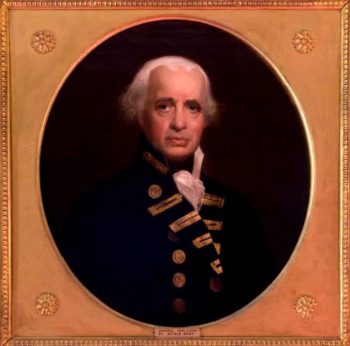
Admiral Earl Howe, 1795, wearing an admiral’s
undress uniform and his own white hair.
The painter was Mather Brown.
It was Penn Assheton Curzon (1757 – 1797), son of Assheton Curzon,1st Viscount Curzon (1730 -1820), who brought in the Howe connection by marrying the eldest daughter of the then First Lord of the Admiralty, later Admiral of the Fleet, Richard Viscount Howe. His name appears on at least three of the memorials in the chancel although there is no memorial to him in Penn Church. Indeed, no record of a visit has been seen, but his son-in-law, Penn Assheton Curzon, was buried in the vault under the chancel which was dug for him in 1797. Admiral Howe was still alive and active so there would seem to be a high probability that he came to Penn for the burial of his daughter’s husband.
He had joined the Royal Navy as a Midshipman at the age of 13, as was customary at the time, and his promotion was very rapid, decisively aided by wealth and royal connections (his grandmother was the Countess of Darlington, George I’s illegitimate half-sister), as well as considerable ability. He was a Master and Commander with his own ship at 19, a Post-Captain at 20 and saw distinguished service in four wars. For a brief period he had been Flag Captain to the Prince of Wales’ second son, Prince Edward, Duke of York, a Rear Admiral, a sign of royal approbation. It is not surprising to find that his biographer described him as headstrong, and obsessed with rank, position and his own self-importance. On the other hand he had vast prestige with his sailors who nicknamed him ‘Black Dick, the sailor’s friend’.
Admiral Howe was appointed commander-in-chief in North America in 1776 and received a commission, jointly with his younger brother, General Sir William Howe, who was already there in command of the army,. They were ‘to treat with the revolted Americans, and to take measures for the restoration of peace with the colonies’. Admiral Howe had often talked to Benjamin Franklin about the colonists’ grievances, and was sent as a conciliator, but arrived after the declaration of independence on 4 July 1776. He was too late.
He was particularly famous for leading the Channel Fleet of some 36 ships of the line to victory in a highly successful naval action 430 miles west of Ushant, against the French Revolutionary fleet on 1 June 1794, ‘The Glorious First of June’, celebrated for many years by the Royal Navy. The decisive point in the battle was a bloody encounter between the two flagships, the Queen Charlotte and the Montagne, which came within a few feet of each other exchanging lethal broadsides. The French were badly beaten with one ship sunk and six captured and he was a national hero. The King and Queen with three princesses went out to his flagship at Portsmouth and presented the Admiral with a diamond-hilted sword (valued at 3,000 guineas, an immense sum at that time), promising him the Order of the Garter.
His final contribution to the Navy which he had served so well for 57 years was successfully to negotiate with the mutineers at Spithead in 1797 and get them back to sea. They had genuine grievances, not least that their pay had not been increased since 1652. He had in fact retired some days earlier, but his reputation with ordinary seamen was so high that he was begged by the King to go to Portsmouth to see what could be done, and he spent several days being rowed about the Fleet speaking to the men. Both his courage and his taciturnity were proverbial. ‘I think we shall have the fight today’, one of his seamen is reported to have said on the morning of the First of June 1794, ‘Black Dick has been smiling’. He apparently often had a harsh and forbidding expression, but he was careful of the health and welfare of his men and they appreciated his ‘grim peculiarities’.
He had been created Earl Howe and Baron Howe of Langar in 1788 and when he died, the most famous Admiral in the country, he was buried at Langar in Nottinghamshire and a monument was placed in St Paul’s. His elder daughter, Sophia Charlotte, was allowed to inherited the barony, but he had no sons and so the earldom became extinct until it was it was renewed for his grandson in 1821, who then became the second ‘first Earl Howe’.
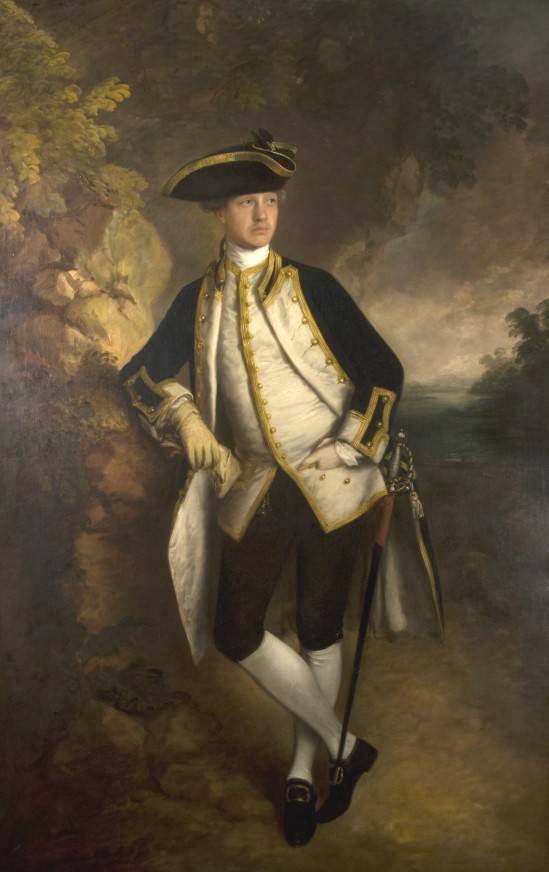
The future Admiral Howe, in 1763,
by Thomas Gainsborough.
© Miles Green, Penn Parish Newsletter No.46, November 2016
Photographs © courtesy of Eddie Morton ARPS
Admiral The Hon. Sir Assheton Gore Curzon-Howe GCVO KCB CMG FRGS (1850 -1911)
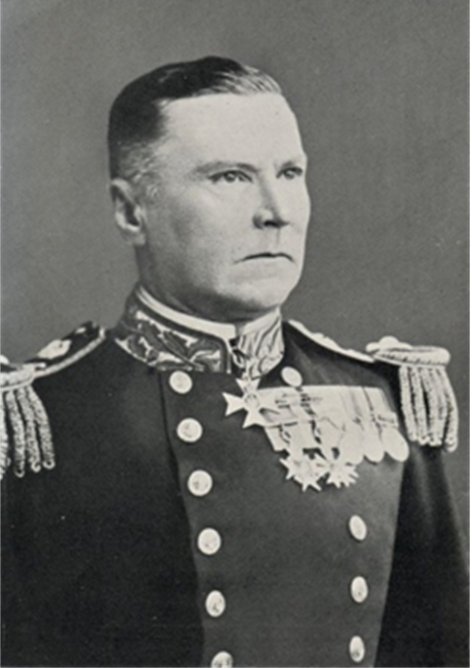 The youngest of thirteen children of Richard William Penn Curzon-Howe (1796 – 1870) he was born in Gopsall, Leics. He was promoted to the rank of Lieutenant from the Royal Yacht Victoria and Albert on 18 September 1872.
The youngest of thirteen children of Richard William Penn Curzon-Howe (1796 – 1870) he was born in Gopsall, Leics. He was promoted to the rank of Lieutenant from the Royal Yacht Victoria and Albert on 18 September 1872.
Curzon Howe was promoted Captain in 1888 when thirty-seven years old. The same year he was in command of Boadicea as Flag Captain to Rear-Admiral The Hon. Edmund Freemantle. Then he was appointed Assistant Director of Naval Intelligence and head of the Foreign Intelligence Division.
From 1892 to 1895 Curzon-Howe commanded the corvette HMS Cleopatra on the North America and West Indies Station. Having commanded HMS Revenge in 1896 he was appointed to the training ship HMS Britannia in 1897.By January 1900 he had been promoted and was in command of the battleship HMS Ocean when she was commissioned 20 February 1900 for service on the Mediterranean Station. She transferred to the China Station in January 1901, in response to the Boxer Rebellion.
Curzon-Howe was appointed a Naval Aide de Camp (ADC) to Queen Victoria in July 1899, and was re-appointed as a Naval Aide de Camp to her successor King Edward VII in February 1901. He was promoted to flag rank as Rear Admiral in July 1901, which ended the appointment as Naval ADC.
On 5 June 1902 he was appointed second-in-command of the Channel Squadron, and temporarily hoisted his flag on board HMS Cambridge, gunnery ship at Devonport, before he transferred to the battleship HMS Magnificent later the same month.[11] Shortly before his departure from London he was received in audience by King Edward VII. With Magnificent, he took part in the fleet review held at Spithead on 16 August 1902 for the coronation of King Edward VII, and visited the Aegean Sea for combined manoeuvres with the Mediterranean Fleet the following month. Later the same year he was appointed a Commander of the Royal Victorian Order (CVO) in the November 1902 Birthday Honours list.
He was flying his flag in HMS Caesar (Captain Sydney Fremantle) in 1906.[In 1907, he was Commander-in-Chief of the Atlantic Fleet. Curzon-Howe then served as Commander-in-Chief, Mediterranean Fleet from 1908 to 1910. He was promoted to Admiral in 1909. During 1909 he underwent surgery for a cancerous tumour on his tongue. He was Commander-in-Chief, Portsmouth from 1 May 1910 until his death from a brain haemorrhage, age 60, on 1 March 1911 at Christchurch, Hants.
Sources: The Dreadnought Project and Wikipedia
Vice-Admiral Herbert Whitmore Savory M.V.O. R.N. (1857 -1918)
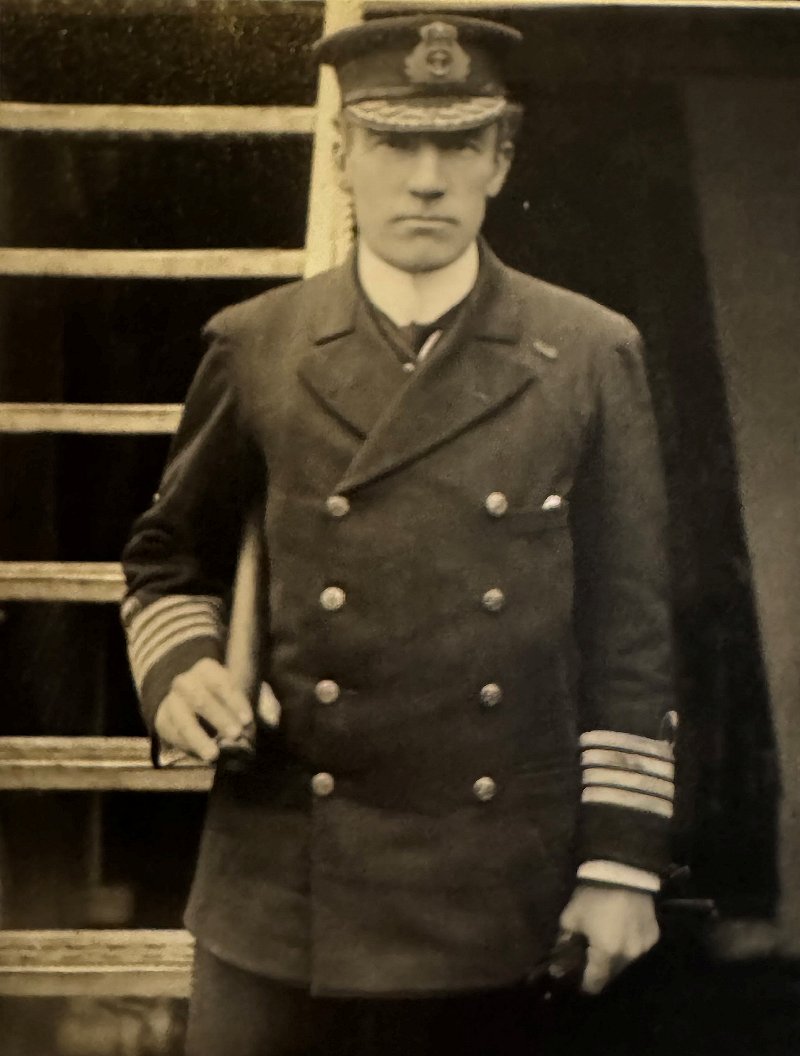 Savory entered service in the Navy in 1870 aged 12 ½ . In 1882 he was promoted to Lieutenant and in 1886 was in command of the first-class torpedo boat T.B. 4. Between 1892 and 1895 he served aboard Impregnable, the training brig Pilot and Agamemnon. In 1895 Savory was promoted to the rank of Commander when nearly 38 years old and then in 1901 he was promoted to Captain.
Savory entered service in the Navy in 1870 aged 12 ½ . In 1882 he was promoted to Lieutenant and in 1886 was in command of the first-class torpedo boat T.B. 4. Between 1892 and 1895 he served aboard Impregnable, the training brig Pilot and Agamemnon. In 1895 Savory was promoted to the rank of Commander when nearly 38 years old and then in 1901 he was promoted to Captain.
He commanded the cruisers Hawke (in 1903) and Diadem (in 1905). On the occasion of the special Mission of Prince Arthur of Connaught to invest the Emperor of Japan with the Most Noble Order of the Garter in 1906, Captain Savory was appointed a Member of the Fourth Class of the Royal Victorian Order (M.V.O.).
In July 1907 the Atlantic Fleet (based in Gibraltar) under Vice-Admiral The Hon. Sir Assheton Curzon Howe was dispatched to Quebec to celebrate the tercentenary. Savory was Curzon-Howe’s Flag Captain and commanded HMS Venerable. In August 1907 Savory was appointed to command the battleship Prince of Wales for a year and a half followed by two years as Captain of Training Ship HMS Impregnable.
He was promoted to the rank of Rear-Admiral in 1911 and at the end of that year he was placed on the Retired List at his own request. He was advanced to Vice-Admiral on the Retired List in 1916 and died a couple of years later. His grave is marked in Holy Trinity Penn churchyard by marble curbing and a reclining marble cross at the north end of the main churchyard adjacent to the path.
Source: The Dreadnought Project and National Archives
Photograph courtesy Richard Giles, Savory family.
Francis Richard Henry Penn Curzon CBE RD PC RNVR
5th Earl Howe (1884 – 1964)
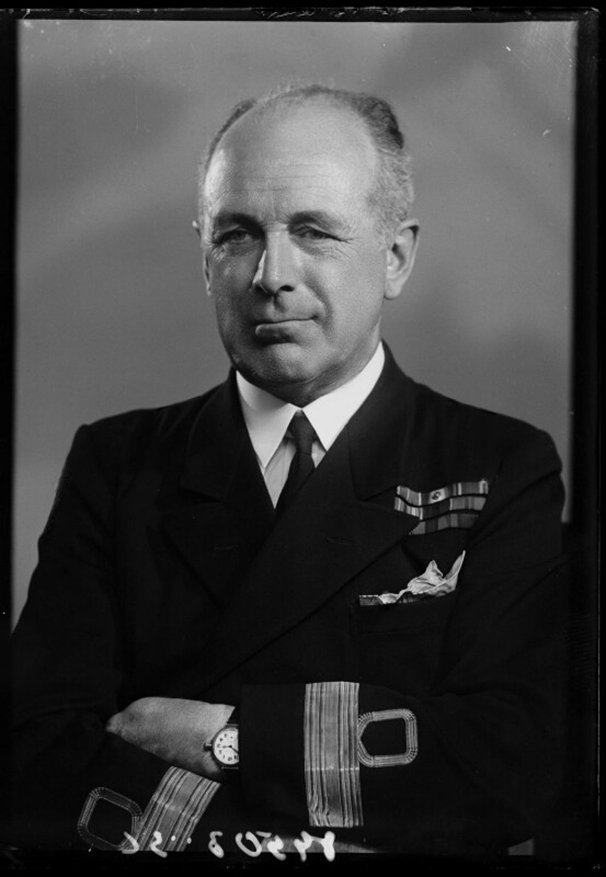 After leaving school he joined the Royal Naval Reserve. When WWI started the RNR became the Royal Naval Division providing forces to fight on land. Howe served as Battalion Commander and saw action at Gallipoli, Salonika and later in France and Belgium.
After leaving school he joined the Royal Naval Reserve. When WWI started the RNR became the Royal Naval Division providing forces to fight on land. Howe served as Battalion Commander and saw action at Gallipoli, Salonika and later in France and Belgium.
He subsequently became assistant gunnery officer in the battleship HMS Queen Elizabeth and, as a keen film maker, organized the cinematographic service for the Navy. He filmed the surrender of the 74 ships of the German Fleet in Scapa Flow.
As Commanding Officer he was actively involved in the Sussex Division of the RNVR between the wars. He was the RNVR’s longest serving Commodore throughout the Second World War.
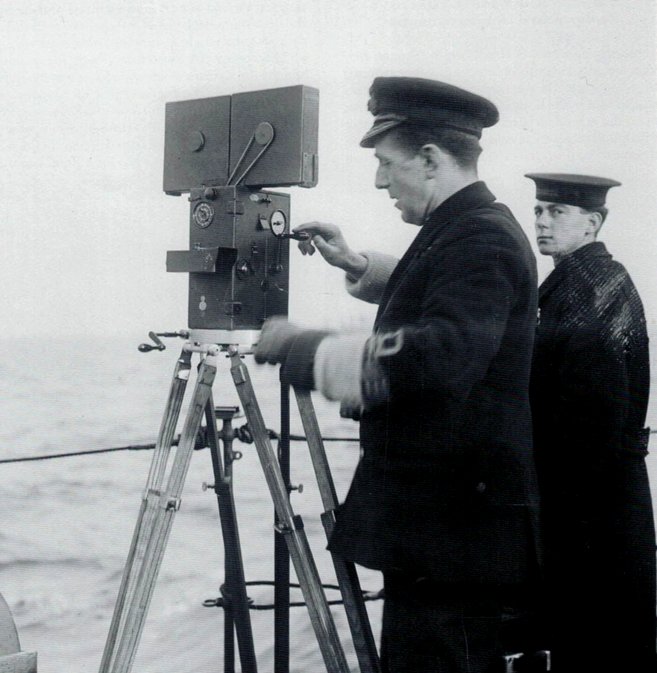 Gunnery officer Howe filming
Gunnery officer Howe filming
the surrender of the German Fleet
at Scapa Flow in 1918.
Following his retirement from the Royal Navy he lived at Penn House and made a career in Motor Racing, documented here.
Commander Chambré George William Penn Curzon (1898 – 1976)
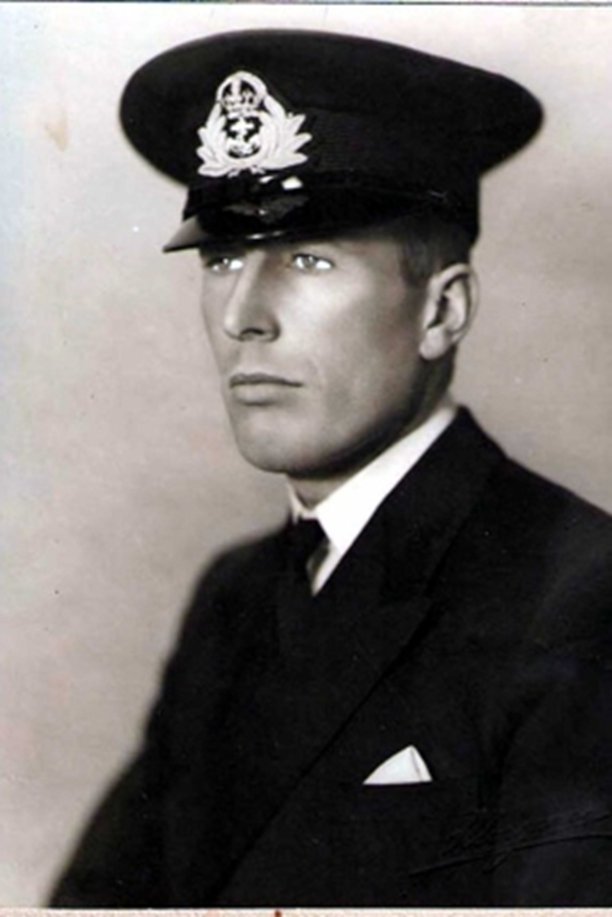
Trained as a naval cadet at Osborne and Dartmouth as a boy and was sent to sea as a 15-year-old midshipman at the start of WWI. He saw service at the Dardanelles, in the Mediterranean and North Sea in Q-ships. As a cadet he had trained alongside Andrew Yates who recorded a story of George Curzon running aground with a picket boat having passed a buoy on the wrong side. While awaiting rescue he decided eliminate the evidence of this error by moving the buoy from its position and placing it on the other side of the boat! He left the navy in 1921 but rejoined in 1939, serving in Ceylon as ADC to Admiral Somerville, Commander in Chief of the Eastern Fleet. Between the wars and afterwards, until he retired, he was a stage and film actor: Details on Wikipedia.
He is the father of the present Earl Howe. He died in 1976 and his grave is in the lower churchyard plot no. 163.
Captain Andrew V.S. Yates M.V.O., R.N., Ceng FIEE, (1900–1991)
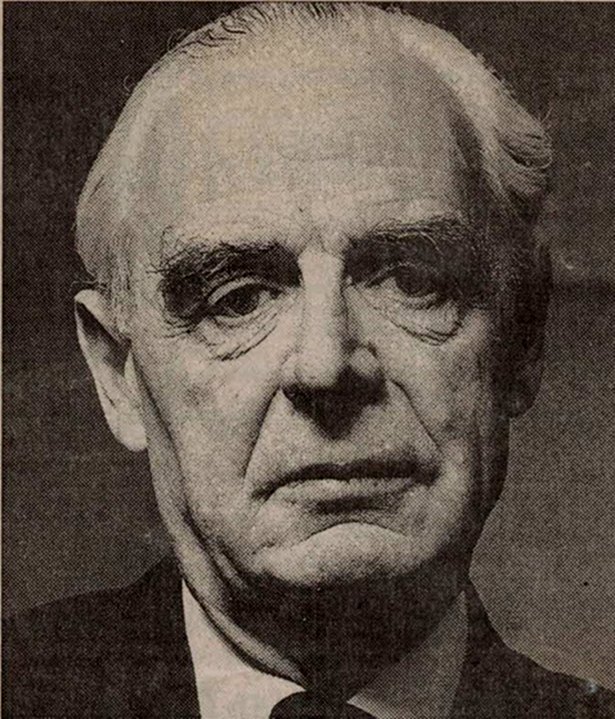
Andrew Yates served in the Royal Navy from 1913 to 1937 and again from 1939 to 1945. He is chiefly remembered for the important role he played in the introduction and development of radar for Royal Navy ships during World War Two.
He joined the Navy as a cadet in August 1913 aged 12 ½. Although a very bright student who was consistently top of his class, he had the misfortune to catch measles which prevented him taking his Passing Out Exams in December 1916. He believed this dogged his career for many years thereafter. At the end of the World War One he was promoted Sub-Lieutenant having spent ‘two years in a hammock and earned two medals and two North Sea clasps.’
After being sent to Cambridge University by the Navy he joined HMS Repulse in 1921 on which he served for nearly 1,000 days – longer than any other officer in the Atlantic Fleet. He noted that he normally worked a 16-hour day with four minutes for lunch. In October 1923 he started to specialise, undertaking firstly the Long Signal Course where he came out with record marks, and then in 1925 he was sent to Greenwich for the six-month Advanced Signal Course where again he finished first in the class.
By 1932 he was Fleet Signal Officer on board HMS Kent, the Navy’s China Flag Ship, responsible for handling the crucial communications between the British Legation in Pekin and the Foreign Office in London. However, when he was overlooked for promotion in 1935, he was convinced this reflected the Navy’s ‘severe prejudice against specialist wireless officers’ and started to consider life outside the Navy. The British Naval Commander in Chief, China Station, Wei-hai-Wei, wrote that during the two years and four months that Lt. Cmdr AVS Yates served as Fleet Wireless Officer he was responsible for wireless communication of 59 ships and two large shore stations and commented on his zeal, great technical knowledge and organizing power. He was an officer of the highest integrity and most reliable in every way. A man who gets things done but his charming personality means he is deservedly popular.
In 1937 he joined the American firm Sperry Gyroscope to help build up their British subsidiary company, but two years later, on the outbreak of War, he re-joined the Navy. He then undertook the building and equipping of ten land-based radio stations, followed by retro-fitting as many ships as possible with their first radar devices. He went on to become Head of Naval Radar, framing policy for H.M. ships throughout the world for which service he was promoted Captain. The Admiralty Signal Establishment of which he was part grew from zero to 5,000 personnel in four years. By the end of the War the last ships built were equipped with thirty radar sets, not one of which had been conceived at the start of the conflict.
After the War he returned to Sperry as Technical Director to develop their Engineering Department at Brentford. Their first commission was to invent, design and build a radar system for Liverpool which enabled the port to continue operating through the worst fogs. Between 1946 and 1956 profits of Sperry grew twentyfold reflecting the growth of the Engineering Department but internal politics later led to Yates’s responsibilities as Engineering Director being reduced. Instead he became Managing Director of another Sperry subsidiary, Wright Machinery Co. He left Sperry in 1960 and then worked as a consultant to Richard Steel’s Servomex Controls Co. as well as to British Aircraft Corporation where his job was to look after distinguished foreign visitors
Andrew Yates with his wife Betty and two young daughters moved to The Red House in Knotty Green in the parish of Penn in 1947. Yates was a man with a gift for friendships and socialising but his contacts seem also to have been aided by good fortune. For example he served alongside Louis “Dickie” Mountbatten (Mountbatten was one of the three other students on the Advanced Signal Course in 1925) and they became good friends. Yates had been on board HMS Malaya in 1917 with Prince Albert (later King George VI) and many years later the King invited him to join the Royal Household as a Gentleman Usher (an unpaid position). On holiday in Malta with Betty in 1950, Yates met the young Princess Elizabeth and Prince Philip who were staying with Mountbatten and he got to know the future Queen there. This was shortly before he was invited to become Gentleman Usher. His service to the British monarchy was recognised when he was appointed a Member of The Royal Victorian Order (M.V.O.) in the 1962 Birthday Honours. Another good friend from early days in the Navy was George Curzon who later became an actor for whom see previous entry.
Betty Yates (née Elizabeth Chapman) died in 1965 and is buried in the churchyard at Holy Trinity Penn. Although Andrew Yates later remarried and moved to Old Windsor, when he died in 1991 he was laid to rest alongside his first wife at Penn. The grave is plot number 65 to the right of the left-hand path.
Writing these notes about Andrew Yates, who was my godfather, brings home the extent I must have been a disappointment to him! He was brilliant at maths, I was hopeless at maths. Although he lent me his Shetland pony to learn to ride it was something I never enjoyed and opted not to pursue. He loved riding, especially to hounds and playing polo. He was of course an excellent competitive sailor, where I was a landlubber. But probably my greatest weakness in his eyes would have been my shyness and having a marked aversion to socialising. His obituary in the Daily Telegraph referred to his legendary “clubability”! However thanks to Andrew Yates I can claim to have once offered sausages on a stick to HRH Queen Elizabeth the Queen Mother.
Oliver Heal.
Source: Twentieth Century Chronicles 1900-1981 – Unpublished autobiography of Andrew V. S. Yates.
Edward Richard Henry Penn Curzon, 6th Earl Howe CBE (1908 – 1984)
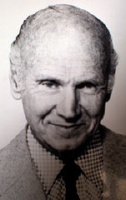 Following the long family tradition of Naval service Viscount Curzon, as he was until his father died, joined the RNVR London Division in 1928 and in 1931 was Acting Sub Lieutenant.
Following the long family tradition of Naval service Viscount Curzon, as he was until his father died, joined the RNVR London Division in 1928 and in 1931 was Acting Sub Lieutenant.
At the outbreak of World War Two he rejoined the RNVR and served aboard the cruiser HMS Cairo in 1940 and 1942 before joining the battleship named after the Admiral Howe – HMS Howe. His war service included the North Sea and the Arctic as part of the Murmansk convoys and latterly in the Indian Ocean and the Far East in HMS Howe. By 1945 he was Acting Lt. Commander and left the service in 1946.
Born in Hanover Square, London, educated at Eton College and Corpus Christi College, Cambridge, Howe had an active public service career after the war. He was Sheriff for Bucks, a Justice of the Peace, County Councillor and Deputy Lieutenant. He was awarded the CBE in 1961. He also shared his father’s interest in motoring and motorsport, becoming president of the British Automobile Racing Club and Vice-Chairman of the Royal Automobile Club.
Curzon succeeded to the title Earl Howe in 1964 and took his seat in the House of Lords. He lived at Penn House and is buried at Holy Trinity Church, Penn Street.
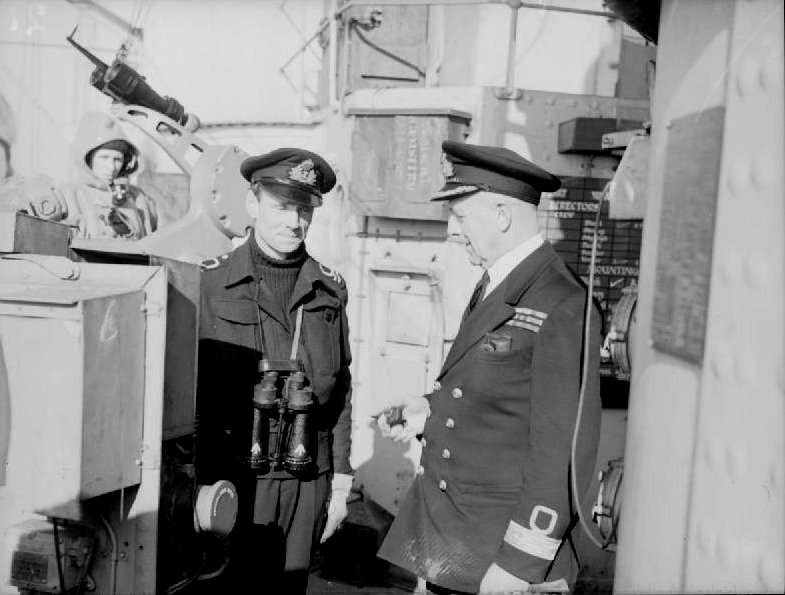 Lt Commander Viscount Curzon
Lt Commander Viscount Curzon
with his father Earl Howe on board HMS Howe.
Captain W. W. Muir, Royal Navy (1914-1964)
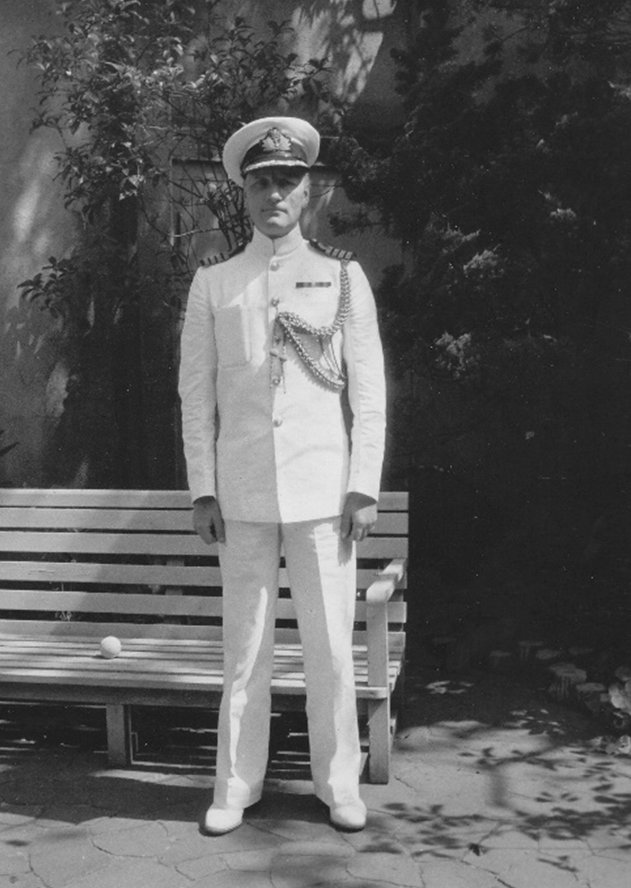
William Wallace Muir, known as Wally, was born on 16 January 1914 in Gibraltar, where his father was a missionary for The Scottish Mission to South Spain and North Africa. Both his parents came from large Scots Presbyterian families so he was brought up in a disciplinary but loving household. When life in La Linea, Spain, under General Franco, became too difficult the three eldest children, including Wally, returned to Glasgow. He gained a scholarship to Bellahouston Academy and after Scottish Highers entered the College of Seamanship. As a sub-lieutenant he joined the Highland Line Freight Company and the Royal Navy Reserve until transferring to the Royal Navy in August 1938.
His Second World War experience was mainly gained as First Lieutenant of destroyers, including HMS Charleston (1940-42), HMS Tuscan & HMS Venus. Notable memories from his war time and passed onto his family include when HMS Tuscan hit a mine in the Mediterranean and had to be steered backwards to Milford Haven. As No. 1, HMS Scourge, on tow of the Russian convoys, he was washed overboard but washed back and found the next day. He also participated in Dunkirk, 1940. Other postings were 2 terms as Training Officer, HMS King Alfred, during which time HMS Spragge (1944-46) was fitted out with heavy electrical supply power equipment. The idea was to take her to and dock in Hong Kong Harbour during its recapture and to supply electricity for the island. The Japanese surrendered before the ship arrived and was ordered to be run around in the Philippines. His service records that ‘As Commanding Officer of HMS Spragge …. [he was] responsible for a noteworthy improvement in morale and discipline among your ship’s company’. William Wallace was then appointed to Victoria Barracks in Hong Kong and, when the barracks were returned to the army, he became Lieutenant Commander & Executive Officer, RN Air Station, Kai Tak.
On his return to England he was appointed to HMS Blackcap, RNAS near Warrington and in 1949 he was promoted to Commander of HMS Sea Eagle, the joint RN/RAF, anti-submarine school in Londonderry. Later service was spent on HS Wren in the Persian Gulf, where he was treated to eagles’ eyes by a Arab prince. Then as Training Commander and after promotion to Captain as Director of Training & Sports, HMS Victory, Victoria Barracks in Southsea, Hampshire (1953-55) when it was noted that he ‘ran the establishment with its diverse talks extremely well and inculcated in your subordinates high standards of professional knowledge and duty’.
His final job was Naval Attaché Toyko & Seoul and Senior GB Officer of Staff, United Nations (1956-59) and the Ambassador especially commented upon his ‘conscientiousness’ and ‘good relations with both American and Japanese officers’. This was a sensitive time in the Far East, post the Korean War.
In 1949 William Wallace Muir had met Mary Claris, WRNS Quarters Officer, at HMS Blackcap and they married the following year at St Michael’s Chester Square, London. Mary was the daughter of Commander Douglas John Claris (RN) and Barbara Sybil Fremantle; Mary’s grandfather being Admiral Sir Sydney Robert Fremantle (1857-1958).
After retirement from the Royal Navy the couple and their three children, Penelope Jane (b. 1951), Robert Wallace (b. 1954) and Clarissa Mary (b. 1960), moved to Hogback Wood Road, Beaconsfield, and William Wallace worked as Administrative Executive and Personnel Officer for a London based property and investment company. The family regularly attended Penn Church and the children went to High March Prep School, which Mary had also attended in her youth. In the words of Mary ‘William Wallace was a man of total integrity with a nice dry typical Scottish sense of humour’ and a great family man, who adored his children and was a keen sportsman playing cricket at Knotty Green.
Aged only 50 years old, William Wallace died on 20 July 1964 and was buried in Penn Churchyard. His family continued to live in the parish until 1978 and Mary Muir served on the Parochial Church Council. After the children had left home she retired to the Petersfield area, Hampshire, where she died in 2009. Her ashes were interred with her husband’s in Penn and marked at plot no. 6.
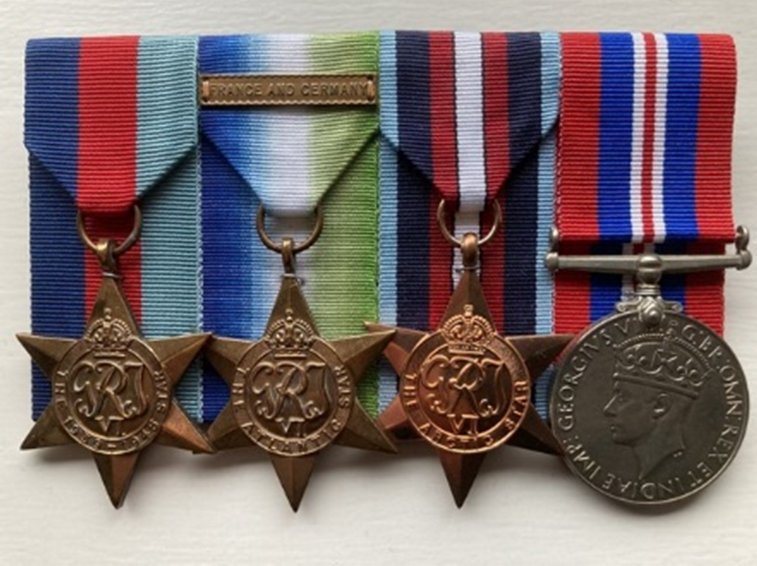
Clarissa Ward
Jock Matthew Clarke-Campbell (1920-1985)
Ranks Held:
1st September 1937: Midshipman
1st September 1939: A/S Lt (Acting Sub-Lieutenant)
16th October 1939: Second Lieutenant
16th May 1941: Lieutenant
16th May 1949: Lieutenant Commander
Retired: 13th May 1958
Warship Commands listed for Jock Matthew Clarke-Campbell, RN
HMS Flanders (FY 600), Trawler: 5th April 1942 – 20th October 1942
Naval Trawlers were used as both Minesweepers and anti-submarine craft.
Memorial Plaque in Penn Church
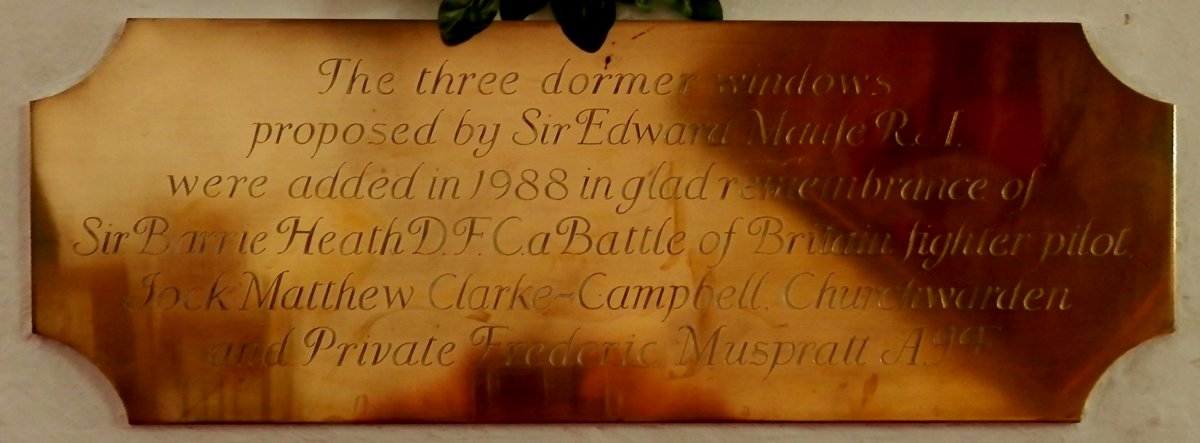
Jock Matthew Clarke-Campbell (1920-1985) is buried in plot 109 in the New Churchyard at Penn, with his wife Rosemary (1922-2009).
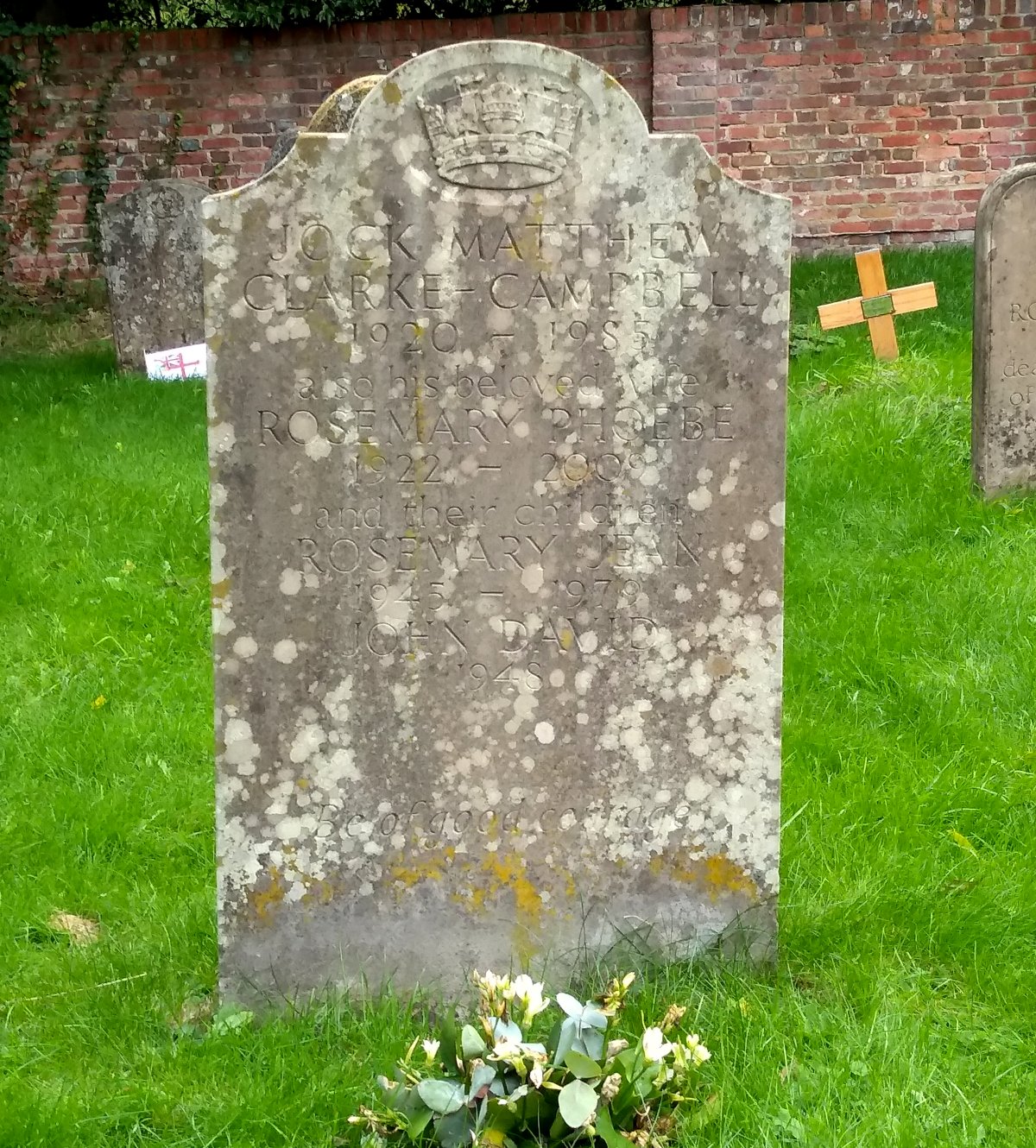
Captain Brian Gilmore Young DSO RN (1930-2009)
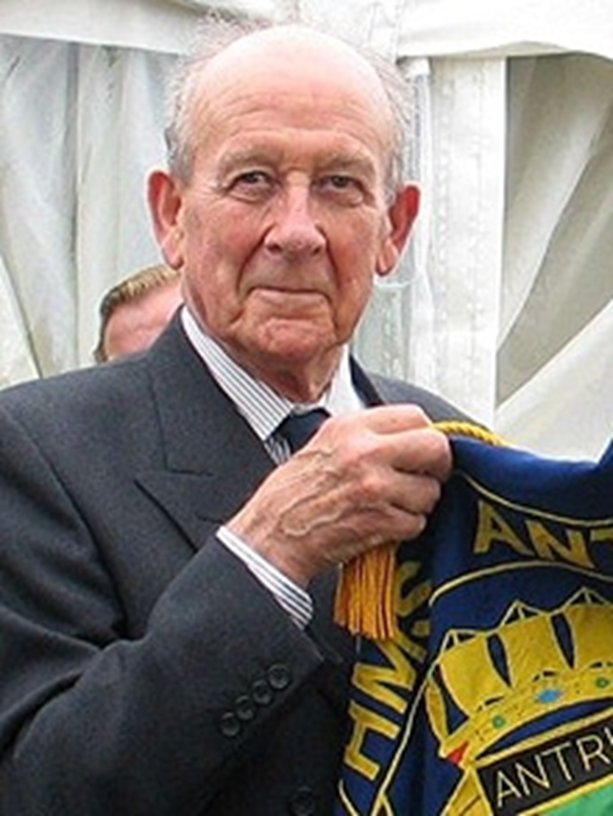
Captain Brian Young, who has died aged 79, commanded British forces at the Battle for South Georgia which, planned in great secrecy, ended the three-week occupation of the island by Argentine marines.
On April 10 1982, while the Task Force under the command of Rear-Admiral Sandy Woodward was still assembling at Ascension, Young was given command of Task Group 317.9, which included the destroyers Antrim and Plymouth and the tanker Tidespring; on board were M Company of 42 Commando Royal Marines, the Special Boat Squadron, and the Special Air Service Regiment, under the tactical command of Major Guy Sheridan.
Young’s task was to rendezvous with the frigate Brilliant, the ice-patrol ship Endurance and the freighter Brambleleaf. The Argentines, under Lieutenant-Commander Alfredo Astiz, had landed on the remote and barren island of South Georgia seven days earlier.
The official name of the operation was “Paraquet”, but the men called it “Paraquat”, after the well-known weed killer.
After a helicopter reconnaissance and delays caused by thick low cloud, driving rain and snow storms, SAS troops were landed on Fortuna glacier above the port of Grytviken on April 21. But after the weather worsened, they requested evacuation; in the attempt, two of the three helicopters crashed in white-out conditions, though there were no serious casualties. An attempt by SBS troops to land in boats was also defeated by atrocious weather. Then came warnings of an Argentine submarine.
Young, a Fleet Air Arm pilot, had the satisfaction of commanding the first ever anti-submarine operation successfully conducted exclusively by helicopters. During the hunt Santa Fe was attacked with depth charges and air-to-surface missiles and badly damaged; on April 25 she was caught on the surface off Grytviken.
Reckoning now that the sight of a wounded submarine might demoralise the enemy, Young – who for several days had been juggling with the problems of keeping his ships refuelled and out of sight of enemy aerial reconnaissance – agreed to an immediate landing.
He ordered a bombardment of open ground to demonstrate the superior firepower of the British and, while Sheridan’s marines made their way along the steep slopes of a mountain and SAS troops approached through a minefield, his ships showed themselves at sea out of the mist.
When, the next day, April 26, the Argentine garrison at Leith was persuaded to surrender, the island had been retaken only 23 days after its invasion. Not a shot had been fired by ground forces of either side. Young signalled London: “May it please Her Majesty that the White Ensign flies alongside the Union Flag on South Georgia. God Save The Queen.”
News of the helicopter crashes on Fortuna glacier had been, according to the Defence Minster John Nott, “the worst moment of the war for all of us [in the government]”.
The news of victory brought welcome relief back in London. Outside Number 10, Mrs Thatcher told the television cameras: “Just rejoice at that news and congratulate our forces and the marines. Rejoice.”
According to the official historian of the Falklands War, Sir Lawrence Freedman, an operation that had appeared difficult had turned out to be surprisingly easy. The citation for Young’s DSO emphasised that the importance of Paraquet to the overall strategy of recapturing the Falklands could not be overstated; nor could Young’s personal contribution to the success. A month later British forces made their main landing on the Falkland Islands.
Brian Gilmore Young was born on September 25 1930 in Kent, where his family, originally Irish Catholics, were farmers. He joined the Royal Navy in 1944 as a cadet, first at Eaton Hall, Chester, then at Dartmouth. He served as a midshipman and sub-lieutenant in the battleship King George V, the light carrier Theseus and the sloop Wren.
Young learned to fly in the United States, serving from 1954 to 1958 with 803 and 804 naval air squadrons, flying Sea Hawk jet fighters from the carriers Albion, Centaur, Bulwark and Ark Royal, and participating in ground attacks in Egypt during the Suez War.
From 1958 to 1960 he was on exchange service in the RAF as an instructor on Hunters, and then became senior pilot of 804 squadron in the carrier Hermes.
Young’s leadership qualities were recognised by two commands: 892 squadron in Centaur during the Confrontation in Borneo and the Royal Navy’s 766 “top gun” squadron at the All Weather Fighter School.
Returning to general service, Young commanded the minesweeper Wiston and the 9th Mine Counter Measure Squadron based in Bahrain. His next few appointments prepared him well for his role as commander of Operation Paraquet: he attended the Joint Services Staff College; was Staff Aviation officer to Flag Officer Carriers and Amphibious; commanded the frigate Danae; attended Senior Officers’ War Course at Greenwich; and was Assistant Chief of Staff (Warfare) to the Commander-in-Chief Fleet, and Chief of Staff to the Flag Officer Naval Air Command.
Young set and maintained very high standards which he expected everyone else to match, but he was also thoughtful to his crews.
Brian Young, who died on Christmas Eve 2009, married, in 1958, Sheila Young, who survived him. She died in 2012 and her ashes are buried alongside his in plot no. 247 on the righthand path of the lower graveyard.
Daily Telegraph Obituary 12 January 2010.
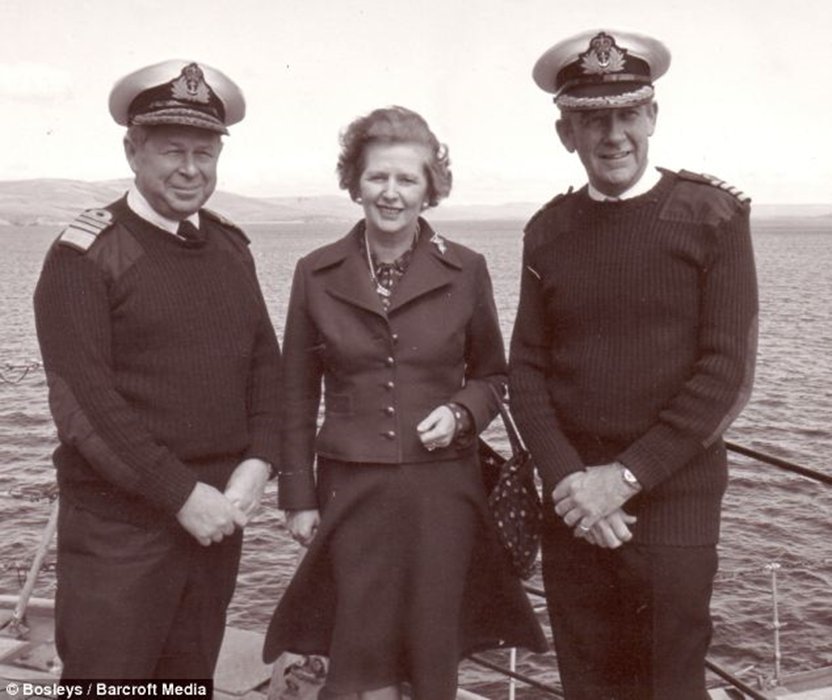 Capt. Brian Young (right) with Prime Minister Margaret Thatcher.
Capt. Brian Young (right) with Prime Minister Margaret Thatcher.
Oliver Heal, September 2022


















